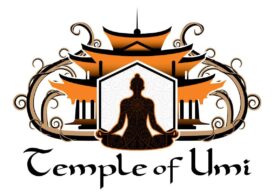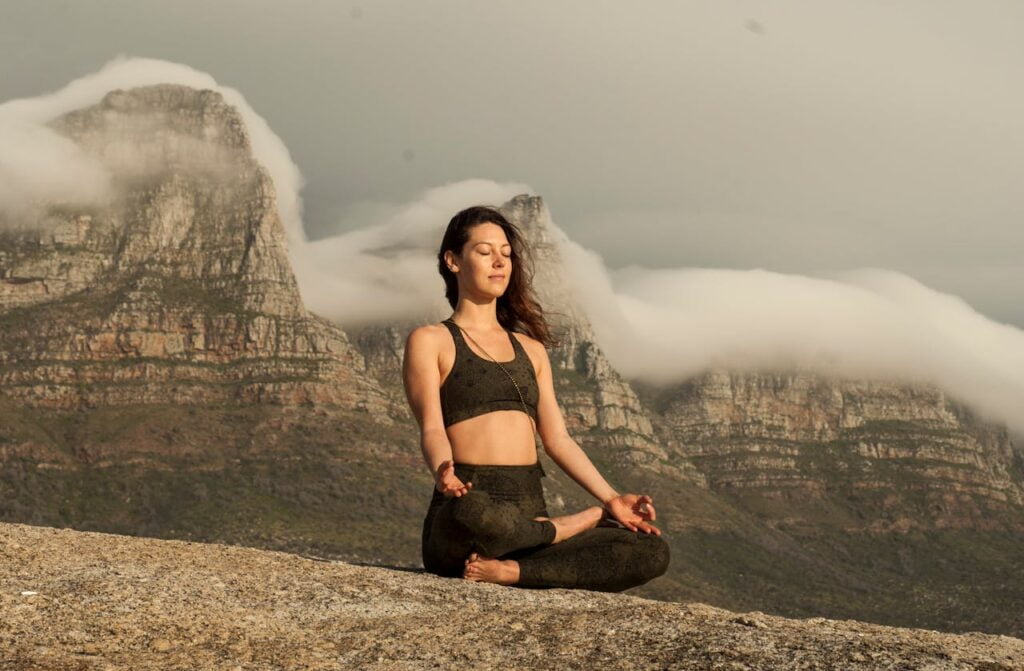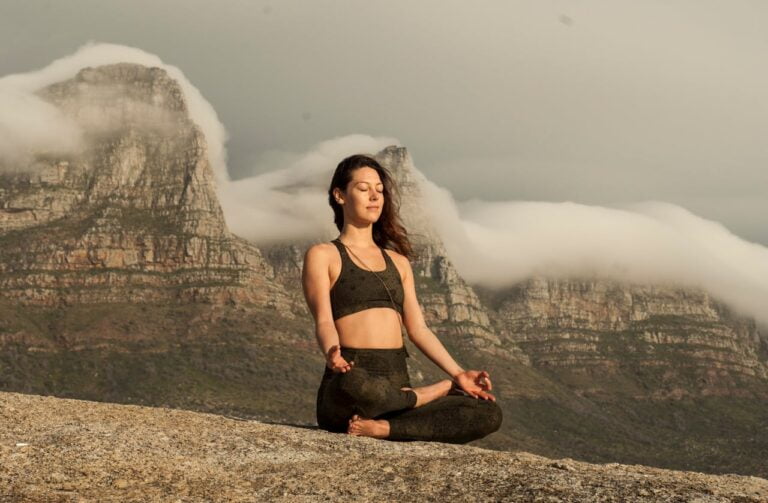“Explore effective meditation postures and how they can improve your physical comfort and mental clarity during meditation. Find tips for beginners and seasoned practitioners alike in our detailed guide.
Introduction
Meditation is cherished worldwide for its profound impact on mental, emotional, and physical well-being. Meditation posture is Central to this practice, which can significantly influence the quality of your meditation sessions. Proper posture is not merely about sitting up straight—it’s about aligning your body to promote concentration, relaxation, and the flow of energy.
Meditators may find that their practice deepens more effortlessly when they adopt the correct posture. The proper posture reduces physical discomfort and distractions, allowing practitioners to focus more on their mental activities. Moreover, a well-maintained posture can enhance breathing, foster a better mental state, and help sustain meditation for extended periods. Thus, understanding and maintaining an appropriate meditation posture is critical in harnessing meditation’s full benefits.
Understanding Meditation Postures
Definition and Purpose of Meditation Posture
Meditation posture refers to how a person positions their body during meditation. While several styles and traditions of meditation advocate different postures, the core idea remains the same: to sit in a position that is stable, comfortable, and conducive to focus and breathing. The primary purpose of a proper meditation posture is to facilitate a state of physical equilibrium and mental alertness devoid of exertion or strain. This balance helps to quiet the mind and sharpen concentration, making the meditative experience more effective and enriching.
Common Myths and Misconceptions about Meditation Posture
Despite its importance, there are several myths surrounding meditation posture that can mislead and intimidate beginners. Here are a few common misconceptions:
- The need for a perfect lotus position: Many believe a full lotus position is essential for “true” meditation. However, the key to an effective meditation posture is comfort and stability, which can be achieved in positions that do not require extreme flexibility.
- Stillness equals stiffness: Another misconception is that one must remain immobile to meditate effectively. In reality, minor adjustments are acceptable and often necessary to maintain comfort during longer sessions.
- Posture is secondary to mental focus: While mental focus is crucial, neglecting physical posture can lead to discomfort and distraction, undermining the meditation practice. Learn more.
Basic Meditation Postures
Meditation posture plays a crucial role in the effectiveness of your practice. Choosing the correct position can enhance your meditation experience, allowing for deeper focus and relaxation. Here are some fundamental meditation postures to consider:
- The Seated Position:
- Cross-legged (Sukhasana): This common meditation posture is ideal for beginners. Sit on the floor with your legs crossed and hands resting on your knees or thighs. Ensure your spine is straight, which helps with deeper breathing and focus.
- Half Lotus (Ardha Padmasana): This is a variation of the full lotus. It involves placing one foot on the opposite thigh while the other rests under the opposite thigh. This posture provides a more stable base for longer meditations.
- Full Lotus (Padmasana): This more challenging position involves placing each foot on the opposite thigh. It’s highly stable and often used for advanced practices, as it aids in maintaining alignment and increasing energy flow.
- The Kneeling Position (Seiza): In this posture, you kneel with your buttocks resting on your heels and your hands on your thighs. This can be more comfortable for those who find sitting difficult.
- Chair Meditation: Adapting for Physical Limitations:
- A chair can be an excellent alternative if sitting on the floor is challenging. Sit with your feet flat on the ground, back straight, and hands on your knees. Ensure the chair provides firm support to maintain proper meditation posture.
Key Elements of Proper Meditation Posture
Maintaining the correct meditation posture is not just about sitting still; it’s about aligning and stabilizing your body to support mental and spiritual well-being. Here are crucial elements to focus on:
- Alignment: Spine, Neck, and Head Positioning:
- Keep your spine erect but not stiff. Align your neck so your head feels light atop your spine, reducing strain.
- Ensure your gaze is gently lowered, with your chin slightly tucked, promoting focus and reducing eye strain.
- Stability: Grounding the Body Effectively:
- Feel the parts of your body that touch the ground, whether seated or kneeling. Use this contact to visualize roots extending into the earth, enhancing your sense of stability and grounding.
- Comfort: Adjusting Posture to Avoid Pain:
- Adjust your position to maintain the meditation posture without significant discomfort. Minor discomfort might be natural at first but should not distract from meditation.
- Use cushions or mats to support your posture and alleviate pressure points, especially seated positions.
Maintaining a proper meditation posture is essential for physical ease and deeper psychological and spiritual benefits. These guidelines will help you establish a solid foundation for a fulfilling meditation practice.
Adjustments and Aids for Enhancing Meditation Posture
Various tools and adjustments can be incorporated into your practice to achieve an optimal meditation posture, which is particularly useful for those new to meditation or experiencing discomfort.
- Use of Meditation Cushions and Benches
- Cushions: A meditation cushion or zafu raises the hips, allowing the knees to fall below them. This promotes a natural curve of the lumbar spine, helping maintain an upright yet relaxed posture without straining the back.
- Benches: Meditation benches provide a solid seat that supports a kneeling position. They are ideal for those who find sitting cross-legged uncomfortable. The slight incline of most benches helps tilt the pelvis forward, encouraging spinal alignment.
- Modifications for Those with Back Pain or Mobility Issues
- Chair Meditation: Sitting on a chair is an excellent modification for those with back pain or knee problems. Ensure both feet are flat on the ground and the spine remains upright. Placing a cushion or a rolled-up towel at the lower back can provide additional support.
- Wall Support: Using a wall to support the back during meditation is another helpful adjustment. This can alleviate back pain by providing a structure to lean against, reducing the strain on the back muscles.
- Tips for Maintaining Posture Without Discomfort
- Interval Adjustments: Periodically adjust your position slightly during meditation sessions. These minor shifts can prevent any single muscle group from becoming overly tired.
- Body Scans: Periodically conducting a body scan during meditation can help identify areas of tension and allow for micro-adjustments. This mindfulness of body positioning helps maintain both comfort and posture integrity.
Benefits of Maintaining Correct Meditation Posture
Optimizing your meditation posture enhances comfort and brings various physical, mental, and spiritual benefits.
- Physical Benefits
- Improved Breathing: Proper posture ensures the lungs have enough space to expand, promoting more profound, more efficient breathing.
- Reduced Pain: Aligning the spine correctly reduces unnecessary strain on your back, neck, and shoulders, preventing pain typical of poor postural habits.
- Mental Benefits
- Enhanced Concentration: A stable and comfortable posture prevents the distractions typically caused by physical discomfort, thus aiding better focus and concentration.
- Mindfulness: Maintaining a deliberate posture helps cultivate heightened awareness and presence, which are critical components of effective meditation.
- Spiritual Benefits
- Deeper Spiritual Connection: Discipline in maintaining correct posture can be seen as a form of self-respect and dedication to meditation, which deepens the spiritual journey by fostering a sense of inner alignment and tranquility.
Common Challenges and How to Overcome Them
Addressing Discomfort During Meditation
- Identify the Source: Identify what causes discomfort during meditation, whether a physical limitation or an unsuitable sitting surface.
- Make Adjustments: Use props like meditation cushions, mats, or chairs to provide better support and alleviate strain on your body.
- Shift Positions: If a particular meditation posture causes discomfort, consider switching to another posture, such as kneeling or using a meditation bench.
Dealing with Distractions and Restlessness
- Create a Conducive Environment: Reduce external distractions by meditating in a quiet, clean space where you are less likely to be disturbed.
- Focus Techniques: Use focus techniques, such as concentrating on your breath or employing a mantra, to anchor your attention and combat restlessness.
- Gradual Training: Start with short meditation sessions and gradually increase the duration as your mind and body adapt to the practice.
How to Stay Motivated and Consistent in Practice
- Set Realistic Goals: Establish attainable goals and gradually build up the length and frequency of your meditation sessions.
- Regular Schedule: Incorporate meditation into your daily routine at a specific time to foster habit formation.
- Community Support: Join meditation groups or online communities to stay motivated through shared experiences and encouragement.
Integrating Proper Posture into Daily Life
Exercises and Practices to Improve Posture Outside of Meditation
- Strengthening Exercises: Engage in activities like yoga or pilates that strengthen the core muscles, which support maintaining a good meditation posture.
- Posture Reminders: Set reminders on your phone or computer to check and correct your posture throughout the day.
- Ergonomic Adjustments: Arrange your workspace ergonomically to support proper posture, reducing the risk of back and neck pain.
The Role of Mindfulness in Maintaining Posture Throughout the Day
- Mindful Awareness: Regularly check your body’s alignment during daily activities like walking, sitting, or standing.
- Mindful Correction: Whenever you notice slouching or misalignment, gently realign your posture to its proper form.
- Mindfulness Practices: Incorporate mindfulness practices into your daily life to enhance your awareness of body posture and overall well-being.
Final words
Throughout this guide, we have explored the crucial aspects of meditation posture, highlighting its significance in enhancing your meditation practice. From understanding the basic seated and kneeling positions to integrating aids for comfort, we’ve covered a variety of ways to optimize your posture. Here are the key points to remember:
- Proper Alignment: Maintaining a straight spine, relaxed shoulders, and a balanced head position is fundamental in any meditation posture.
- Comfort and Stability: Cushions or benches can help achieve a more stable and comfortable position, making prolonged meditation sessions more feasible.
- Adaptability: Different postures suit different bodies. Finding the position that feels most natural and sustainable for you is essential.
As you continue meditation, I encourage you to experiment with different postures. Each variation might affect your meditation experience in subtle yet profound ways. Some positions may increase focus, while others might enhance relaxation. Listen to your body’s responses, and adjust your practice accordingly.
Mastering your meditation posture is a rewarding journey that deepens your meditation practice and promotes mindfulness and bodily awareness throughout your daily life. Keep exploring and adjusting—your perfect posture is waiting to be discovered.










